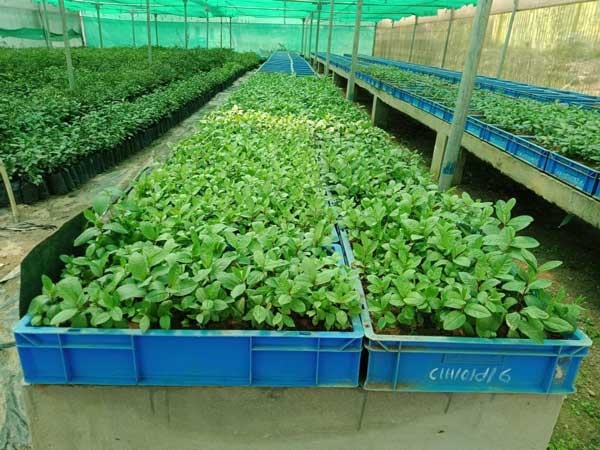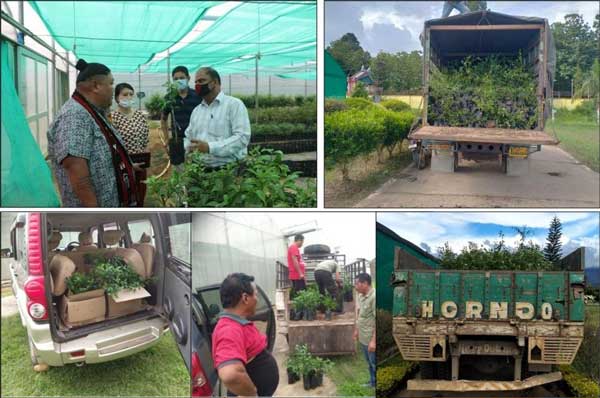Production of quality planting material during lockdown
Production of quality planting material during lockdown period: A CIH Initiative
Central Institute of Horticulture, Nagaland was set up in the year 2005-06 with the objective to provide institutional support for development of horticulture in North East Region. One of the key objectives of the Institute to facilitate production and distribution of disease free planting material to the farming community and the Institute has been working tirelessly towards availability of genuine planting material.
 Fig.1 Propagation activities at CIH, Medziphema
Fig.1 Propagation activities at CIH, Medziphema Fig.2 Planting material at CIH Nursery
Fig.2 Planting material at CIH NurseryThe Institute has already established 20 nos. of mother blocks of crops like Cashew, Citrus, Mango, Guava, Kinnow Mandarin, Assam Lemon, Khasi Mandarin, Pineapple, Litchi, Aonla, Peach, Bael, Sapota, Ber, Custard apple and Fig in 14 ha land .
During the national lockdown, the Institute has been able to supply more than 30000 planting materials of various horticulture crops like Acid Lime, Cashewnut, Khasi Mandarin, Mosambi, Guava and Mango in Kohima, Dimapur, Peren, Mokokchung & Phek districts of Nagaland.
It is estimated that an area of 70 Ha of area has been established in farmers’ field in various districts of Nagaland through the planting materials supplied by CIH, Nagaland.
 Fig.3 Visit of Shri. Temjen Imma Along, Hon’ble Minister, Higher & Technical Education & Tribal Affairs, Govt. of Nagaland to CIH Nursery Units & distribution of planting materials
Fig.3 Visit of Shri. Temjen Imma Along, Hon’ble Minister, Higher & Technical Education & Tribal Affairs, Govt. of Nagaland to CIH Nursery Units & distribution of planting materials 

 Fig.1 Cultivation of french bean
Fig.1 Cultivation of french bean Fig.2 Cultivation of brinjal
Fig.2 Cultivation of brinjal Fig.3 Cultivation of cabbage
Fig.3 Cultivation of cabbage Fig.4 Cultivation of cauliflower
Fig.4 Cultivation of cauliflower Fig.5 Cultivation of tomato
Fig.5 Cultivation of tomato